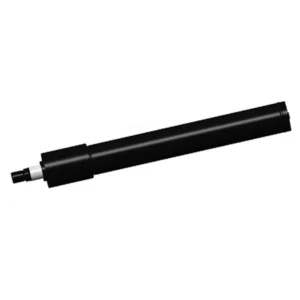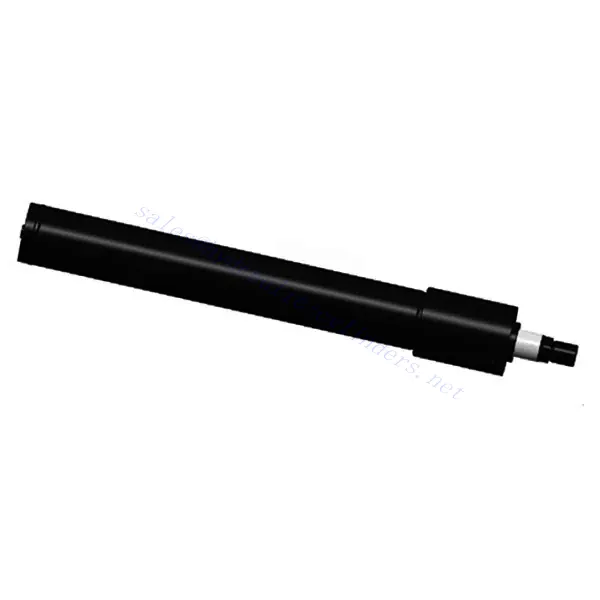Injection Molding Machine Shooting Cylinder
Injection Molding Machine Shooting Cylinder

The injection molding machine shooting cylinder is a crucial component in plastic injection molding processes and is designed to enhance precision, efficiency, and reliability. This specialized cylinder is pivotal in the injection phase, where molten plastic material is injected into a mold to form desired products.
The injection molding machine shooting cylinder is essential in plastic injection molding, enabling precise and efficient injection of molten plastic into molds. With its robust construction, precise control, fast operation, and high injection pressure capabilities, this cylinder ensures accurate and repeatable molding of plastic components. By following the recommended usage methods and maintenance practices, manufacturers can maximize the performance and longevity of the injection molding machine shooting cylinder, ultimately improving the precision, efficiency, and quality of plastic injection molding operations.
Injection Molding Machine Shooting Cylinder Key Characteristics:
- 坚固的结构
- The injection molding machine shooting cylinder features a sturdy construction using high-quality materials, ensuring durability and longevity in demanding manufacturing environments.
- It can withstand high-pressure and repetitive movements, maintaining consistent performance throughout extended production cycles.
- Precise Control:
- This cylinder is designed to provide precise control over the injection process, enabling accurate and repeatable molding of plastic components.
- It allows for fine-tuning of the injection speed, pressure, and volume, improving part quality and reducing wastage.
- Fast and Efficient Operation:
- The injection molding machine shooting cylinder facilitates rapid injection cycles, minimizing production time and increasing overall productivity.
- It ensures swift and precise delivery of molten plastic into the mold cavity, enhancing the efficiency of the injection molding process.
- High Injection Pressure:
- This cylinder is engineered to withstand and deliver high injection pressures required for molding complex and detailed plastic parts.
- It ensures consistent and uniform pressure application, resulting in uniform filling of the mold and optimal part quality.
Injection Molding Machine Shooting Cylinder Parameter:
| Product Name | Injection Molding Machine Shooting Cylinder |
| Features: | Drive the shooting station to move |
| Bore diameter: | 63mm~140mm |
| Rod diameter: | 36mm~90mm Stroke≤1500mm |
| Thrust force: | Maximum 384KN (Bore diameter: 140mm/pressure25MPa) |
| Applications: | Injection Molding Machine |
Rod diameter: 36mm~90mm
Stroke≤1500mm
(Bore diameter: 140mm/pressure25MPa)
Cement Equipment Cylinder Factory:

Usage Method Of Injection Molding Machine Shooting Cylinder:
- Installation:
- Follow the manufacturer’s guidelines to install the injection molding machine shooting cylinder securely into the injection molding machine.
- Ensure proper alignment and attachment to the machine’s injection unit, allowing smooth operation during the injection process.
- Adjusting Injection Parameters:
- Utilize the machine’s control panel or interface to adjust injection parameters, such as injection speed, pressure, and volume.
- Refer to the machine’s operating manual for specific guidelines on setting the appropriate parameters based on the desired part specifications and material characteristics.
- Material Preparation:
- Preheat and prepare the plastic material, ensuring it is in a molten state and ready for injection.
- Load the prepared material into the machine’s hopper or material feeding system, ensuring a consistent supply for the injection process.
- Mold Preparation:
- Set up the mold in the injection molding machine, ensuring proper alignment and clamping.
- Connect the mold to the injection molding machine shooting cylinder’s nozzle, allowing precise and controlled injection into the mold cavity.
- Injection Process:
- Activate the injection molding machine, initiating the injection process.
- The injection molding machine shooting cylinder rapidly delivers molten plastic into the mold cavity, filling it with precision and uniformity.
- After the injection, allow sufficient time for the plastic to cool and solidify before opening the mold.
如何拆卸液压缸?
Taking apart a hydraulic cylinder requires careful and systematic disassembly to ensure the integrity of the components and safe reassembly. Here is a general step-by-step guide on how to disassemble a hydraulic cylinder:
- Safety Precautions:
- Before starting the disassembly process, ensure the hydraulic system is depressurized and shut down. This will prevent any unintended movement or fluid discharge.
- Wear appropriate personal protective equipment, such as gloves and safety glasses, to protect yourself from hazards.
- Identify and Document:
- Take note of the cylinder’s orientation, mounting details, and other relevant information before disassembly. This will facilitate reassembly later.
- Secure the Cylinder:
- Use a suitable workbench or vise to secure the cylinder in a stable position during disassembly.
- Remove External Components:
- Start by removing any external components attached to the cylinder, such as mounting brackets, clevis pins, or retaining rings.
- Drain Hydraulic Fluid:
- Place a suitable container underneath the cylinder to catch any hydraulic fluid that may drain out.
- Loosen the hydraulic fluid reservoir plug or fitting to allow the fluid to drain completely.
- Remove Cylinder End Caps:
- Locate the end caps on the cylinder. These are typically bolted or threaded onto the cylinder barrel.
- Use the appropriate tools, such as wrenches or socket sets, to carefully remove the end caps.
- As you remove each end cap, be prepared for any residual hydraulic fluid or pressure release.
- Extract the Piston:
- With the end caps removed, the piston should now be accessible.
- Gently push on one end of the piston rod to start sliding the piston out of the cylinder barrel.
- Slowly and evenly extract the piston from the cylinder barrel, taking care not to damage any internal components or seals.
- Inspect and Clean:
- Thoroughly inspect all disassembled components for signs of wear, damage, or contamination.
- Clean each component using an appropriate cleaning solvent and lint-free cloth to remove any dirt, debris, or hydraulic fluid residue.
- Replace Seals and O-Rings:
- If any seals or O-rings show signs of wear or damage, it is recommended to replace them with new ones to ensure proper sealing and prevent future leaks.
- Reassembly:
- To reassemble the hydraulic cylinder, follow the reverse order of the disassembly steps.
- Lubricate all seals and O-rings with hydraulic fluid or a compatible lubricant before reassembly.
- Ensure that all components are properly aligned and tightened according to manufacturer specifications.
工厂的能力和产能:
(1) 装配
我们拥有一流的自主研发装配平台。液压油缸生产车间拥有 4 条半自动提升油缸装配线和 1 条全自动倾斜油缸装配线,设计年生产能力 100 万支。特种油缸车间配备了各种规格的半自动清洗装配系统,设计年生产能力 20 万只,并配备了知名数控加工设备、加工中心、高精度油缸加工专用设备、机器人焊接机、自动清洗机、油缸自动装配机、自动喷漆生产线等。现有关键设备 300 多台(套)。设备资源的优化配置和高效利用,保证了产品的精度要求,满足了产品的高质量需求。


(2) 机加工
加工车间配备了定制的斜轨车削中心、加工中心、高速珩磨机、焊接机器人及其他相关设备,可加工最大内径 400 毫米、最大长度 6 米的气缸管。

(3) 焊接

(4) 油漆和涂料
配备中小型圆筒自动水性漆喷涂线,实现机器人自动上下料和自动喷涂,设计产能为每班 4000 件;
我们还拥有一条由动力链驱动的大型油缸半自动喷漆生产线,设计产能为每班 60 箱。


(5) 测试
我们拥有一流的检验设施和试验台,确保气缸的性能符合要求。

We are one of the best hydraulic cylinder manufacturers. We can offer comprehensive hydraulic cylinders. We also provide corresponding 农用齿轮箱. We have exported our products to clients worldwide and earned a good reputation because of our superior product quality and after-sales service. We welcome customers at home and abroad to contact us to negotiate business, exchange information, and 与我们合作!
参观我们的 VR 工厂
通过以下方式参观我们的 VR 工厂
液压缸应用:


